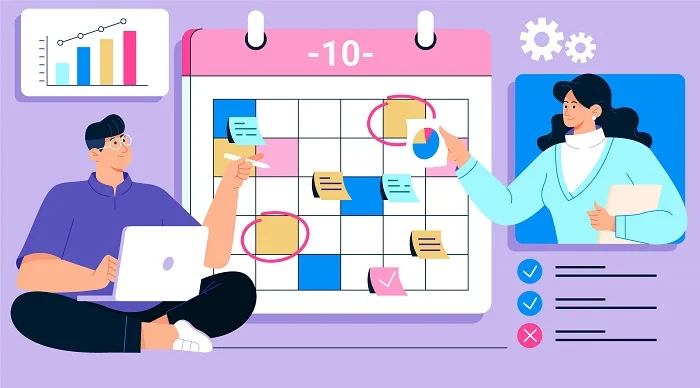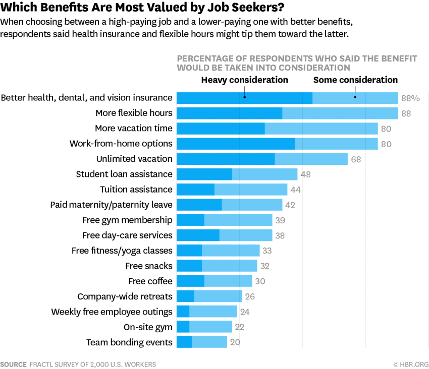The importance of managing a team or department efficiently is well-established. Top leaders recognize that they need effective management to achieve organizational goals. However, one significant aspect of effective management that is often overlooked is coaching.
Coaching vs. Managing: A coach focuses on skill development, engagement, motivation, and a healthy work environment for employees. While managers are responsible for organizing the work, tasks, and processes of their team members.
Managers handle a lot of critical functions and convey confidential information to team members and employees. Hence, team members need to rely on managers for their direction. However, managers also need to ensure other important factors for a company, like employee engagement, motivation, and commitment to goals. They give direction on day-to-day activities and develop problem-solving skills by enabling employees to arrive at their own solutions.
A successful leader needs to assess a situation and decide whether they need to manage or coach the employees. Hence, Managing and Coaching are not interchangeable. Let us discuss what is Coaching in management and how it differs from Managing.
Coaching
Coaching is the act of guiding, engaging, assessing, influencing, and motivating your employees to contribute to organizational goals. It is a two-way process that benefits the management and the other team members.
It serves as a useful means to reduce employee turnover by providing employees with recognition for their work. Coaching boosts employee engagement and increases their level of commitment to organizational goals. The workforce also benefits from the growth and learning opportunities presented to them in such a working environment.
As per Harvard Business Review, direct experience accounts for 70% of employee development in comparison to formal training. Coaching differs from the traditional directive and authoritative approach. The employees are encouraged to come up with innovative solutions. The managers provide the required guidance and support to steer them towards the desired outcome. Although coaching differs from managing in many ways, it can become instrumental to sound management practices.
Managing
Management is the art of getting things done with the help of others. Traditionally, managers are solely focused on achieving a set of outcomes for the organization and give clear and specific instructions to the employees to achieve such goals.
Management involves delegating a task, assigning responsibility, giving direction, and supervising employees. The accurate measure of successful management is the results obtained. However, the absence of coaching can cause employees who rely on the managers to solve every problem they encounter.
Difference Between Coach and Managers
Coaching and managing are two complementary skills. Once a manager understands the difference between coaching vs. managing, they can hone the skills of managing and coaching as and when needed.
Some key differences between coaches and managers are as mentioned below.
Goal-oriented vs. growth-oriented
Authority vs. autonomy
Managers have power over their employees, and they direct such authority to control the work of team members. On the contrary, coaching is based on the premise of having a strong relationship that increases your collective power to achieve long-term growth and success.
While managing is about authority to get things done, coaching provides autonomy to the members of a team.
One-to-many vs. one-to-one relationship
Managing involves leaders instructing an entire team. Coaching, on the other hand, encourages one-to-one relationship building and communication.
Instructions vs. conversation
Managing focuses on giving instructions, supervising performance, and issuing feedback as and when necessary. Hence, managing involves one-way communication.
On the other hand, coaching is a conversation between the managers and the employees. The employees can communicate their objectives, goals, and problems to the employer, who, in turn, can provide their support and guidance.
Crisis management vs. long-term goals
Managing can be suitable for faster decision-making in a crisis. Clear instructions from managers can enable quick execution and remove any room for error. The manager’s experience serves as a valuable resource in crisis management and achieving desired objectives.
Coaching is primarily focused on the long-term goal of both employees and the entity through collaboration and skill development. The employees can communicate their personal growth objectives when managers ask relevant questions and act as a facilitator.
Certainty vs. creativity
Managers use time-tested plans and proven methods to combat a situation and achieve their targets, whereas coaching provides room for creativity and innovation. The employees can come up with their own methodologies to overcome a challenge.
These are some differences between coaches and managers. A successful leader needs to use a mix of these approaches as the situation demands.
However, in some circumstances, it can become difficult to decide between the two alternatives. In such a situation, the 3 Ds of management serves as a useful framework to put an end to the dilemma of coaching vs. managing.
Also read: Employee Wellbeing And Absenteeism At Work
Benefits of Manager Coaching

- Increased Employee Engagement
- Manager coaching helps employees feel valued, improving engagement and reducing turnover rates.
- Coaching fosters open communication and trust between managers and employees.
- Improved Productivity
- Through effective manager coaching, employees gain confidence and become more self-reliant, leading to increased productivity.
- Coaching helps employees develop problem-solving skills, contributing to more efficient task completion.
- Personal and Professional Growth
- Manager coaching encourages employees to pursue skill development, driving their personal and career growth.
- Regular coaching sessions provide guidance and constructive feedback, enabling continuous improvement.
- Enhanced Leadership Development
- Coaching empowers managers to develop future leaders within their teams by honing decision-making and leadership abilities.
- It fosters an environment of autonomy where employees take ownership of their roles and growth.
- Increased Retention Rates
- When employees feel supported through coaching, they are more likely to remain loyal to the organization.
- Manager coaching promotes a positive work environment, contributing to higher job satisfaction and retention.
Three Ds of successful management
Direct
Directing is a management activity that involves giving clear instructions to the employees about their work, expected results, methodologies to be used, and the deadline for the project. The roles are defined in writing to act as future references, both during and after the task. Templates and examples can also be used to clear out any doubts.
Directing can be helpful when employees have limited experience and competence to complete a task. The situation that requires leaders to direct are:
- When an employee is new to the organization.
- When they need to handle a new client or customer.
- When an employee is assigned a new job role and responsibility.
- When they have a different way of working.
- When you need to execute a new strategy or plan of action.
Delegate
The delegation represents a mix of managing and coaching. It can work in situations where employees are experienced and have a proven record of competence.
The leaders need to clearly define the expected result and goals. However, the employees should be allowed to choose their own methodologies to arrive at the desired outcome. The role of the manager, in such a case, involves monitoring progress and providing feedback as and when necessary.
Leaders can choose delegation:
- When the employee is skilled and confident of their abilities.
- When they have the experience and competence to perform the required job role.
- When employees are dealing with a sensitive client.
- When they have a similar approach to working.
Develop
Developing is a manager coaching activity, where you define the objective and let employees take care of the rest. The leaders do not monitor or control the activity. On successful completion, the employees are appreciated to make them feel valued for their contribution.
The leaders then identify new challenges for the continual growth of the employees. Developing is more suitable for employees who are highly experienced, competent, and committed to their job role. You can choose to develop:
- When dealing with a highly skilled and competent workforce.
- When employees have performed similar roles and dealt with similar clients.
- When employees are focused on developing new skills and competencies.
Also read: 7 Ways To Curb Workplace Negativity
Tips for Managers to Improve Their Coaching Skills
As per Gallup, a highly motivated workforce that is aware of their strength can lead to 10% to 19% increased sales and 14% to 29% increased profits. Hence, coaching is quintessential to business success. Some tips that can help managers to improve their coaching vs. managing skills are as mentioned below.
An active listener
As a manager, you should motivate the employees and provide them space to put forward their views. A good manager coaching session involves listening carefully to employees and avoiding any chances of miscommunication.
However, if you are too focused on your inner dialogue, you cannot understand their perspective on the situation, and the conversation becomes futile. Hence, a manager needs to inculcate active listening skills.
A constant source of motivation
A successful manager keeps the employees motivated and provides them with a sense of purpose in the organization. When employees feel they are heard and valued, they are more likely to commit to organizational goals and objectives.
To develop self-confidence, the manager should help employees in improving their skills and provide constructive criticism when required.
Growth mindset
A good manager should aim to create an organizational culture where each employee is provided with the space to learn and grow. From time to time, the managers need to shift the focus from end results to the process of achieving those outcomes.
Ask a question and understand any challenges that the team members are encountering. Encourage your employees to come up with their own solutions. This will help them develop their skills and also contribute to organizational growth.
Coaching vs. Managing: Conclusion
Coaching and managing are two management activities that complement each other. For a successful organization that focuses on growth and development, finding a balance between coaching vs. managing becomes critical.
Managing employees requires strategic thinking, clarity of vision, and good communication. The managers should be assertive and authoritative. However, to coach your workforce, you need to have two-way communication where employees are encouraged to pursue their own growth objectives. The managers act as a support mechanism and a guiding force to steer them to success.
When manager coaching is part of the organization’s culture, managers can work alongside employees to achieve unprecedented growth and success.
Want to know how Engagedly can help you improve manager coaching and manage your employees better?
Request a live demo from our experts!










